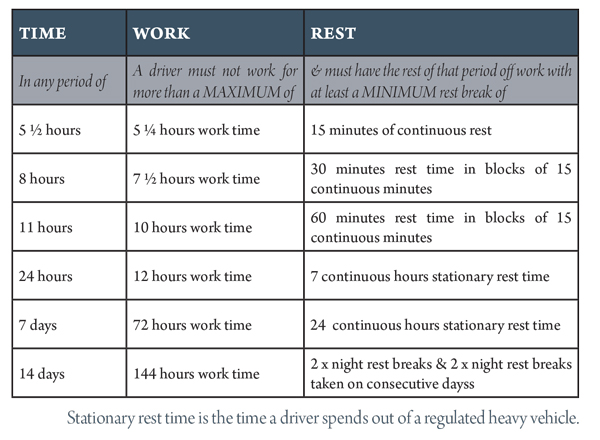MANAGING HEAVY VEHICLE DRIVER FATIGUE
Heavy vehicle driver fatigue reforms are being implemented soon according to a briefing attended by TONY TAMBURRO, from Conundrum Holdings Pty Ltd.
THE new laws will be implemented on 29th September, 2008. Under these laws, everyone in the supply chain will have responsibilities to prevent driver fatigue and ensure drivers are able to comply with legal work/rest hours. Employers and customers will be held accountable for dangerous work schedules and long truck queues, which are known to be major causes of fatigue.
The new laws apply to trucks and buses with a gross vehicle mass (GVM) of over 12 tonnes or a combination, if the total is over 12 tonnes.
The three scheme options are:
- Standard Hours
Night rest breaks are 7 continuous hours stationary rest time taken between the hours of 10pm on a day and 8am on the next day. Work refers to all driving and any other tasks related to the operation of a heavy vehicle including fueling, inspecting, servicing, attending to the load, cleaning, loading, unloading and queuing etc. A new work diary has been designed for drivers replacing existing log books. If working more than 100kms from base the driver will be required to use a work diary. If driving less than 100 kms from base a driver may (optional) use a work diary as a means of recording how they are complying with the new laws. - Basic Fatigue Management (up to 14 hrs work with accreditation)
This offers more flexible hours than Standard Hours including the ability to work shift s up to 14 hours. Operators need to be accredited in NHVAS and comply with six BFM standards. A work diary must be used and carried by the driver at all times. - Advanced Fatigue Management
This option is for operators demonstrating greater accountability for managing fatigue risks and must be NHVAS accredited and comply with ten AFM standards.










You must be logged in to post a comment Login